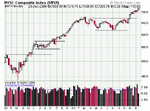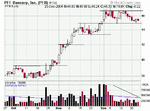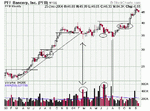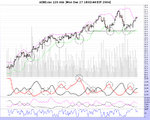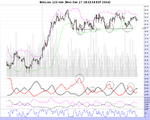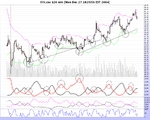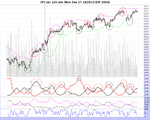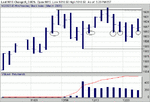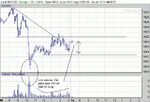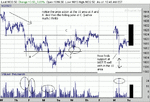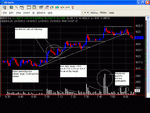erierambler
Well-known member
- Messages
- 265
- Likes
- 8
sulong said:OK , a couple of questions.
first, starting at the far left of the chart on page 1, with in the context of "ret" at what point is your entry, that you would exit from between 4 and 5?
And if you don't mind, at which point is a "ret " type entry no longer appropriate to the market conditions?
From where I sit, point 6 is the is the place I view as a change of tactics are called for, until or unless I see a BO from the range.
Entry would be at #1 and #3 would confirm entry point. The reason for exit is because at the small consolidation (red circle) sufficient supply should have been absorbed to continue upward and then if tentative resistance(#2) became true support then price would hold here. As it did not hold that indicates sign of weakness , price now trendless. It did hold at one time but then price fell through.
At which point is a "ret" type strategy no longer appropriate?................Good question as I am always looking for narrow consolidations and breakout/ rets from them. They don't occur every other day, sometimes take a month to get one. Not sure I can answer that one for you Sulong.
I'm not an active trader, but look only for the setups. Sometimes I just miss them.
If you were to look a #10 and see the narrow consolidation. I would take a "ret " from the breakout there before volume came in , rather than wait for price to go past resistance at #4 and #8. Ditto if price went to the downside.
erie

